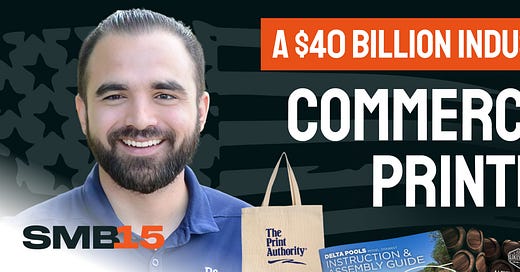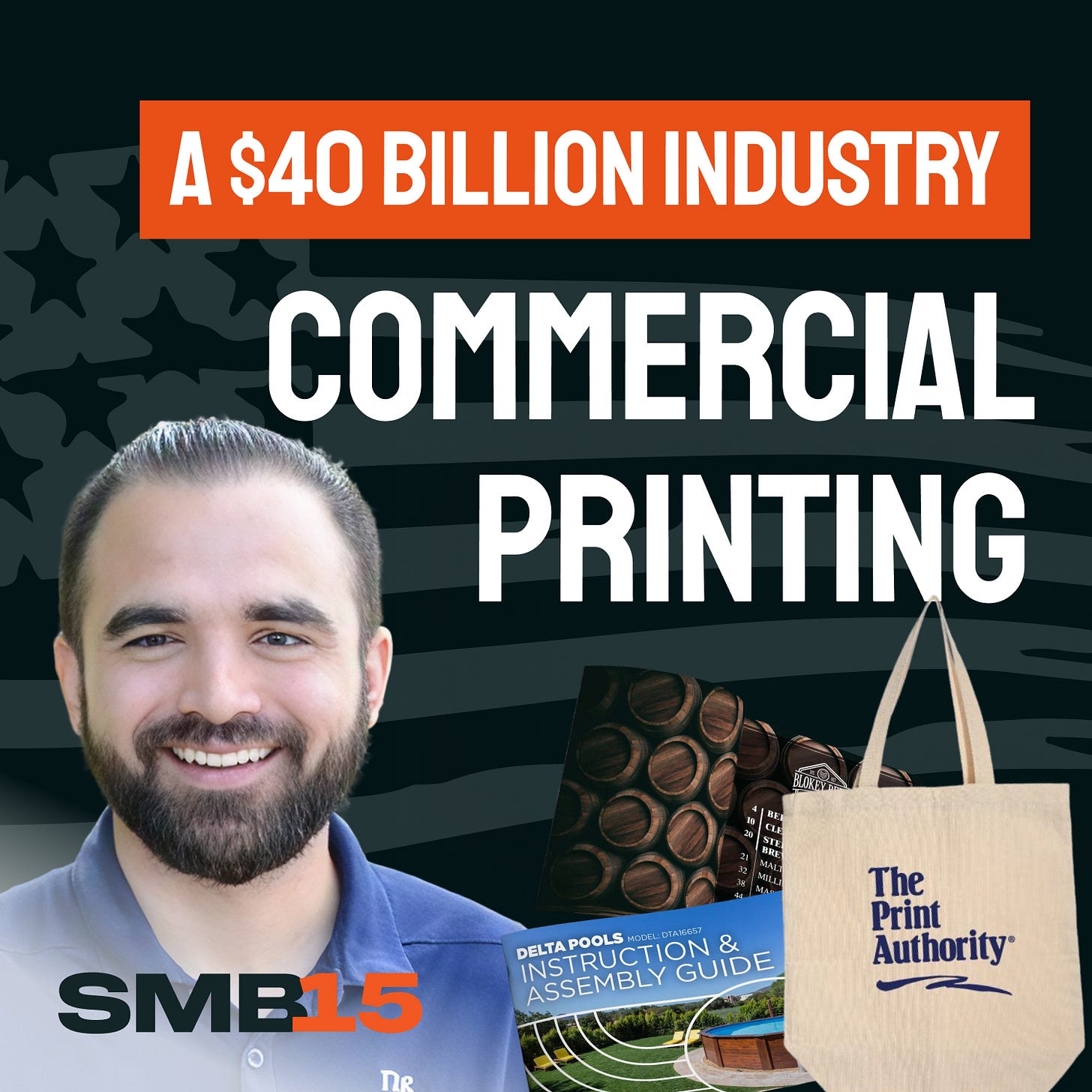Listen now on Spotify or YouTube.
Many assume print is dying, but Connor Pera would disagree. After acquiring The Print Authority, he found a surprisingly durable and fragmented market filled with sticky B2B relationships and reoccurring demand. With a speciality in web-to-print services, Connor is on track to clear $3M in revenue in his third year of ownership.
In this interview, we dive into the mechanics of web-to-print services, how Connor serves multi-location franchise systems, the economics of digital vs. offset printing, and why buying existing customer relationships is often better than building from scratch.
Some takeaways:
The print industry is a $40B market hiding in plain sight. Despite the “print is dead” narrative, it remains a massive, fragmented industry. Most buyers overlook it, which is exactly why Connor leaned in. The industry breaks down into a variety of specialities such as wide format, web-to-print, promotional formats, and commercial prints.
Specialization unlocks sticky, high-margin work. Half of Connor’s business comes from “web-to-print” portals — custom storefronts embedded in corporate intranets where employees order branded materials. These create reoccurring, habit-based ordering behavior that’s hard to displace and easy to scale with clients.
Quality of revenue matters more than the quantity. Connor avoids one-time, price-sensitive work like wedding invites in favor of recurring B2B relationships. His ideal customers are multi-location franchises needing kits, fulfillment, and ongoing reorders. Rather than running a long enterprise sales motion, he prefers to get involved with newer franchise concepts, allowing him to scale along with the franchisor.
Customers choose local shops for speed of delivery and customization. Despite there being a number of national or online-only print solutions, these firms often offer very little customization and delivery times can number in days or weeks. Connor offers a more tailored experience to clients, including design services for those needing help with a layout and delivery for folks located within about a 20 mile radius of their HQ.
Digital printing enables speed — but comes at a cost. Offset printing is efficient at scale but requires costly, complex equipment. Digital printing is more expensive per unit but allows quick turnaround for smaller runs, which has been the overall trend as businesses are more nimble and reactive (e.g., preferring 500 fliers for the conference next week vs. 20K mailers).
Where to find Connor and The Print Authority:
LinkedIn: https://www.linkedin.com/in/connor-pera
Website: https://theprintauthority.com/
In this interview, we discuss:
0:00 The $40B Print Industry
0:55 Intro to Connor Pera
2:00 Specialized vs Non-Specialized Printing
4:40 Why Clients Stick with Mom-and-Pops
6:30 What Print Shops Outsource
8:47 CapEx for a Print Shop
12:28 Buy vs Build in Print
15:04 “Golden Ball” Leads
16:47 Building a Sales Team
18:03 Partnering with Emerging Franchises
19:56 Horizontal vs Vertical Integration
22:32 Delivery Logistics for Local Clients
23:21 Industry Fragmentation & Market Share
25:00 Why Small Local Print Shops Survive
26:07 Advice for Buying a Print Business














Share this post